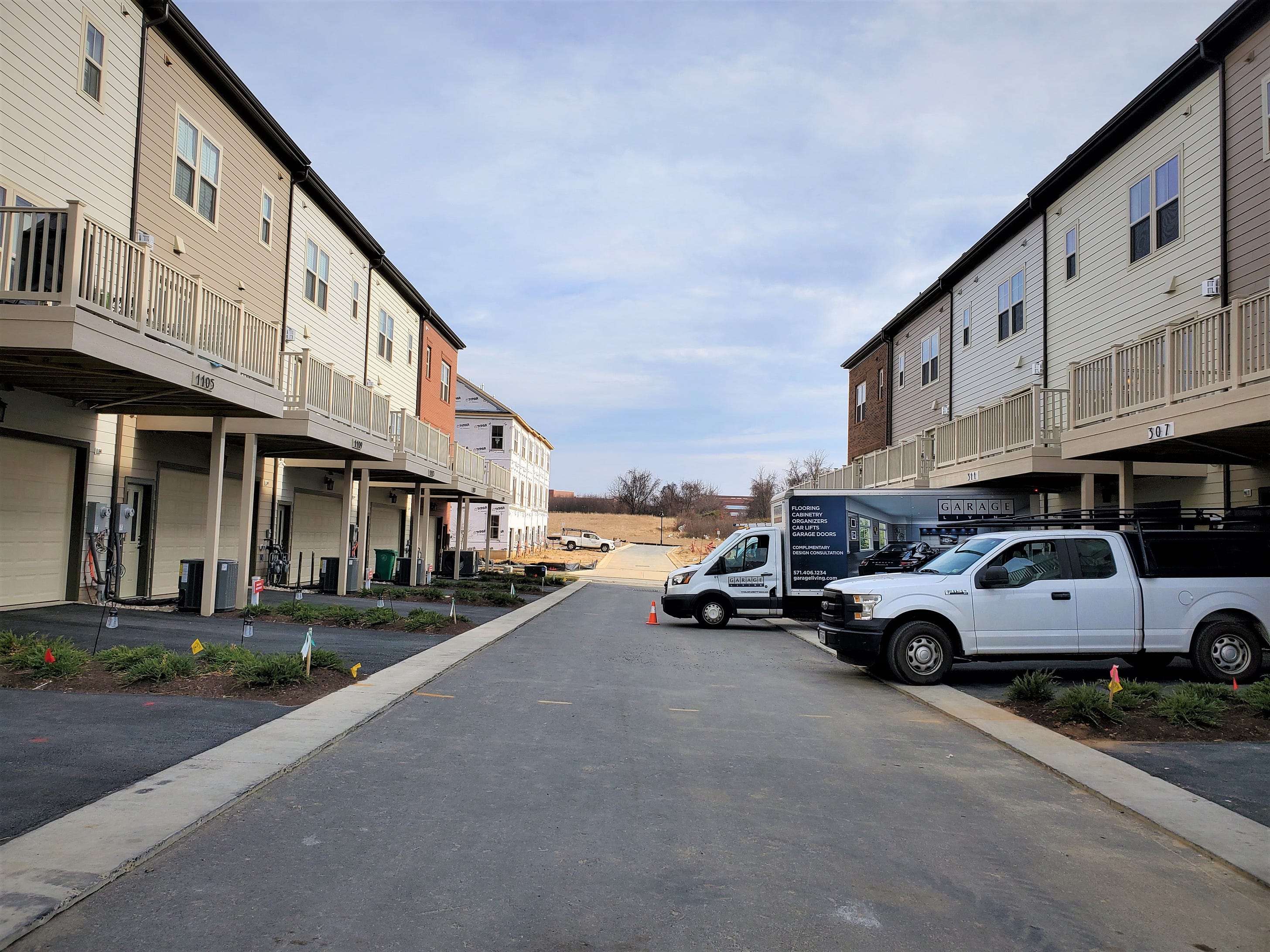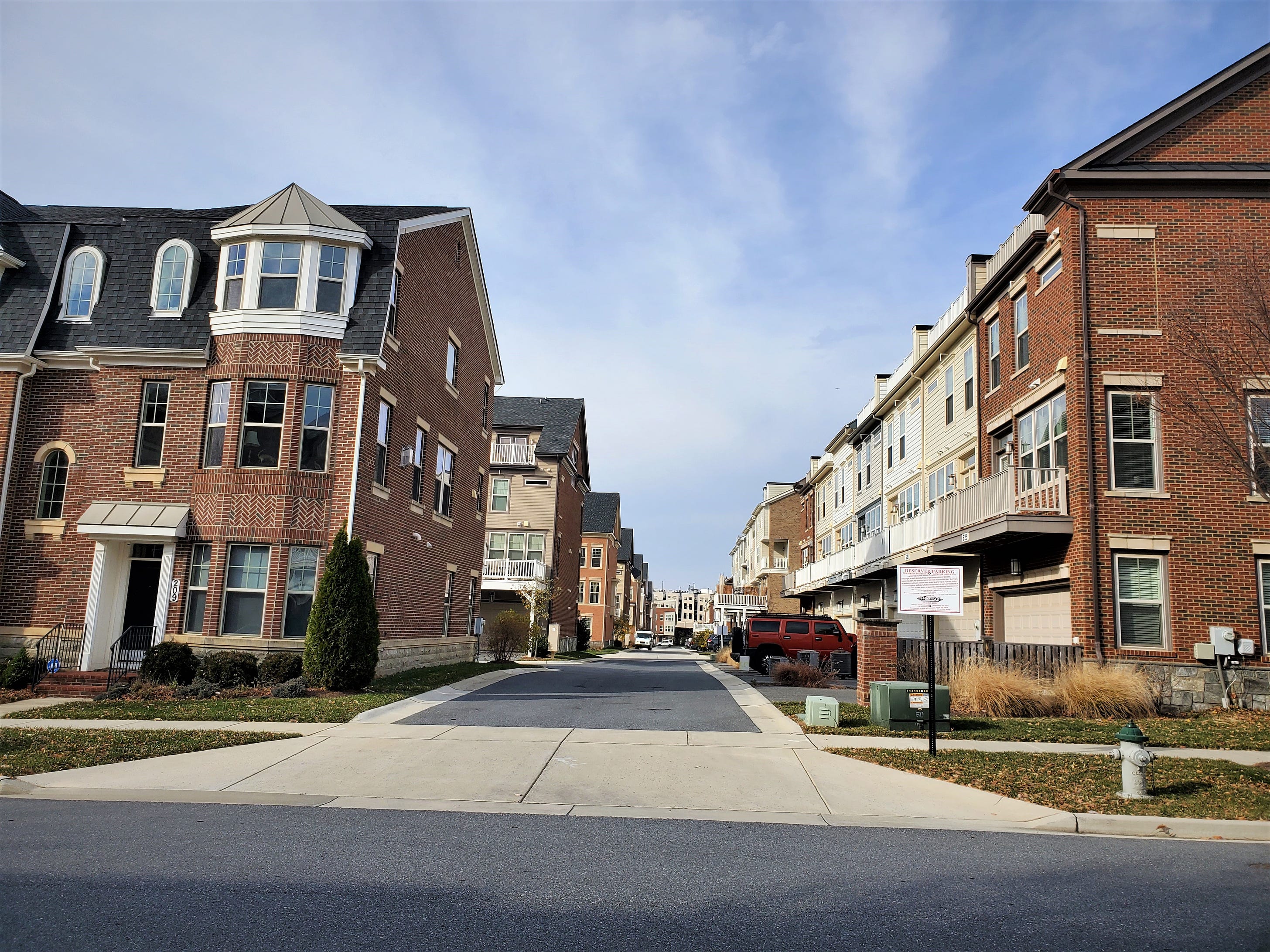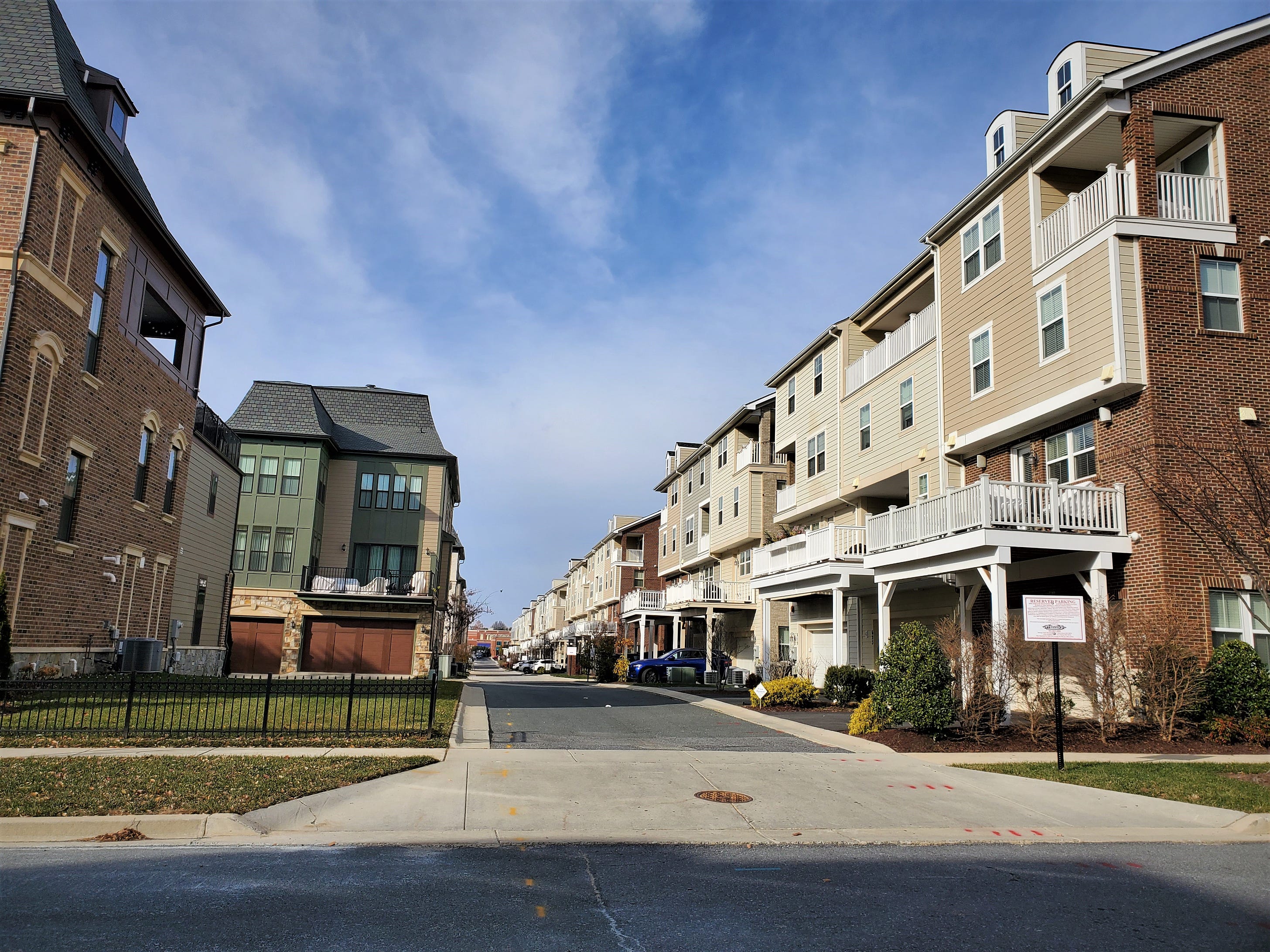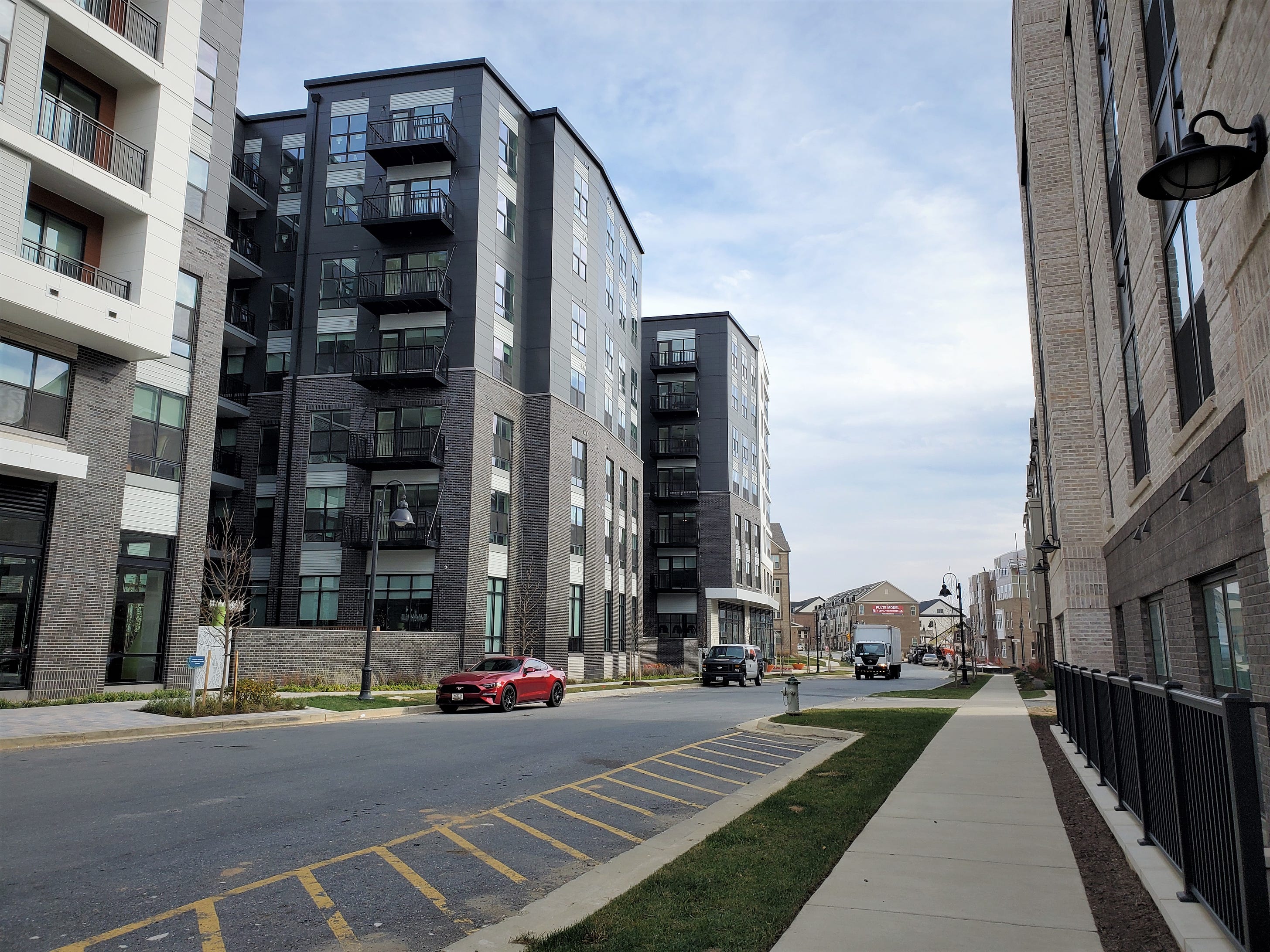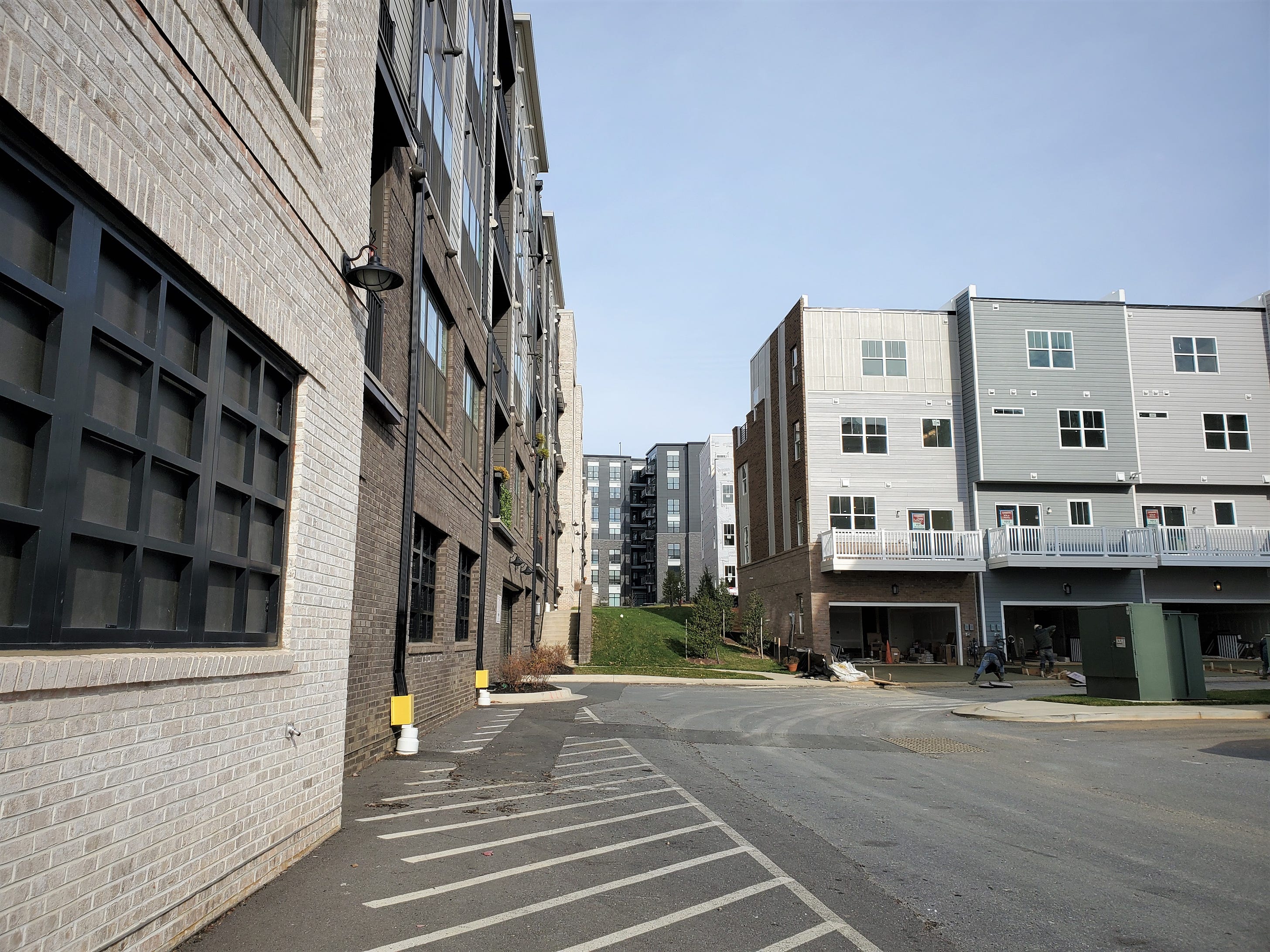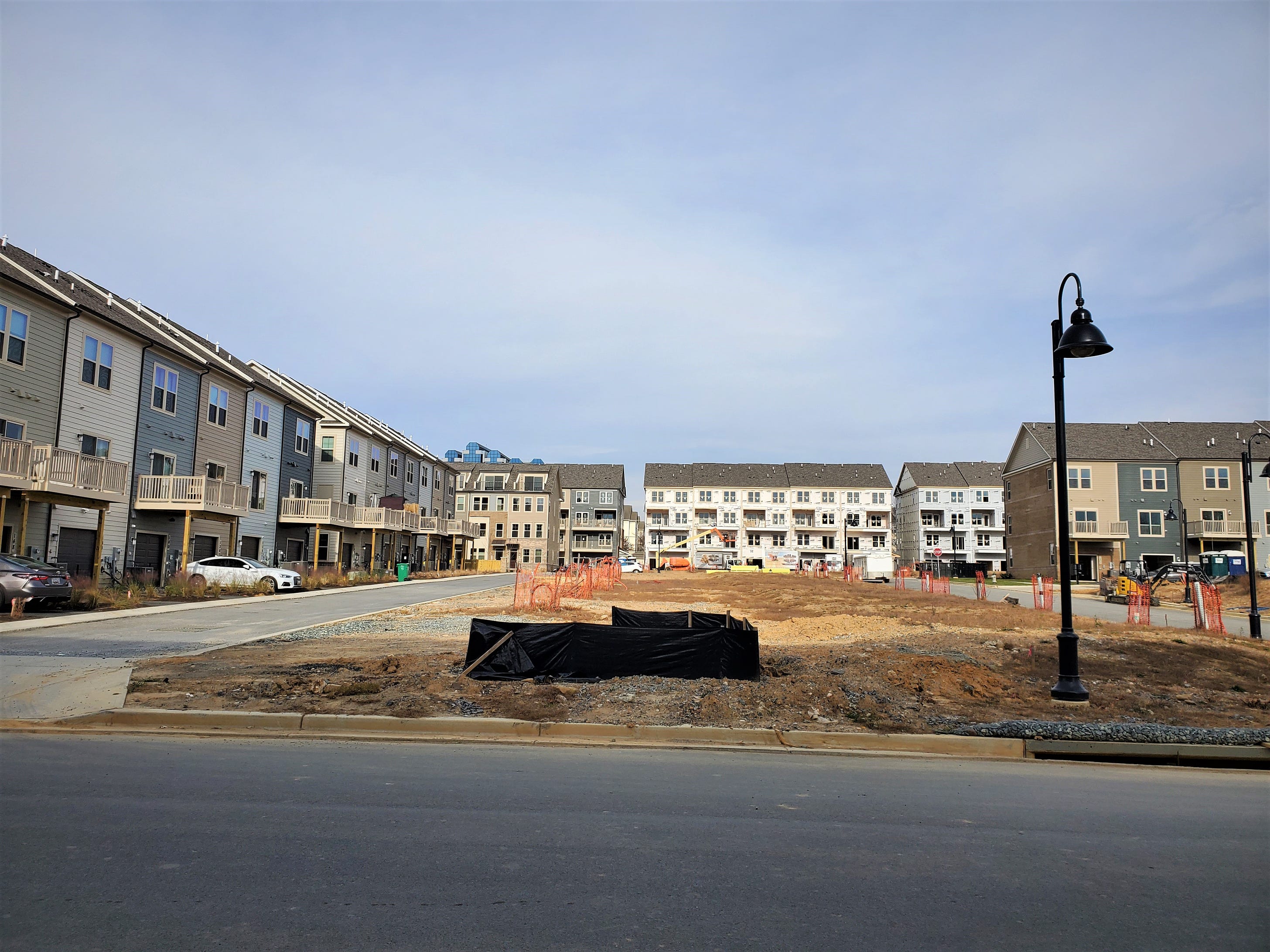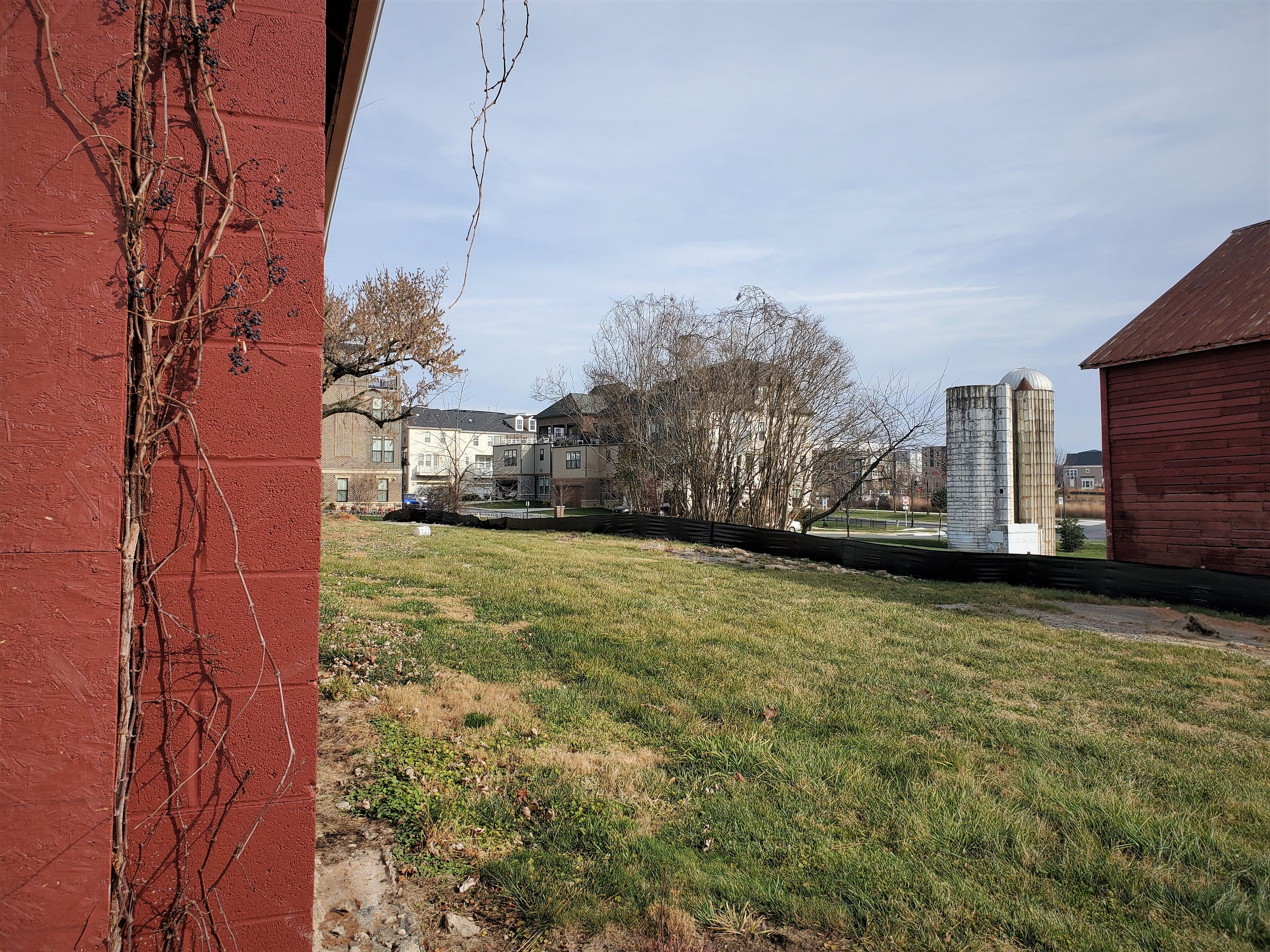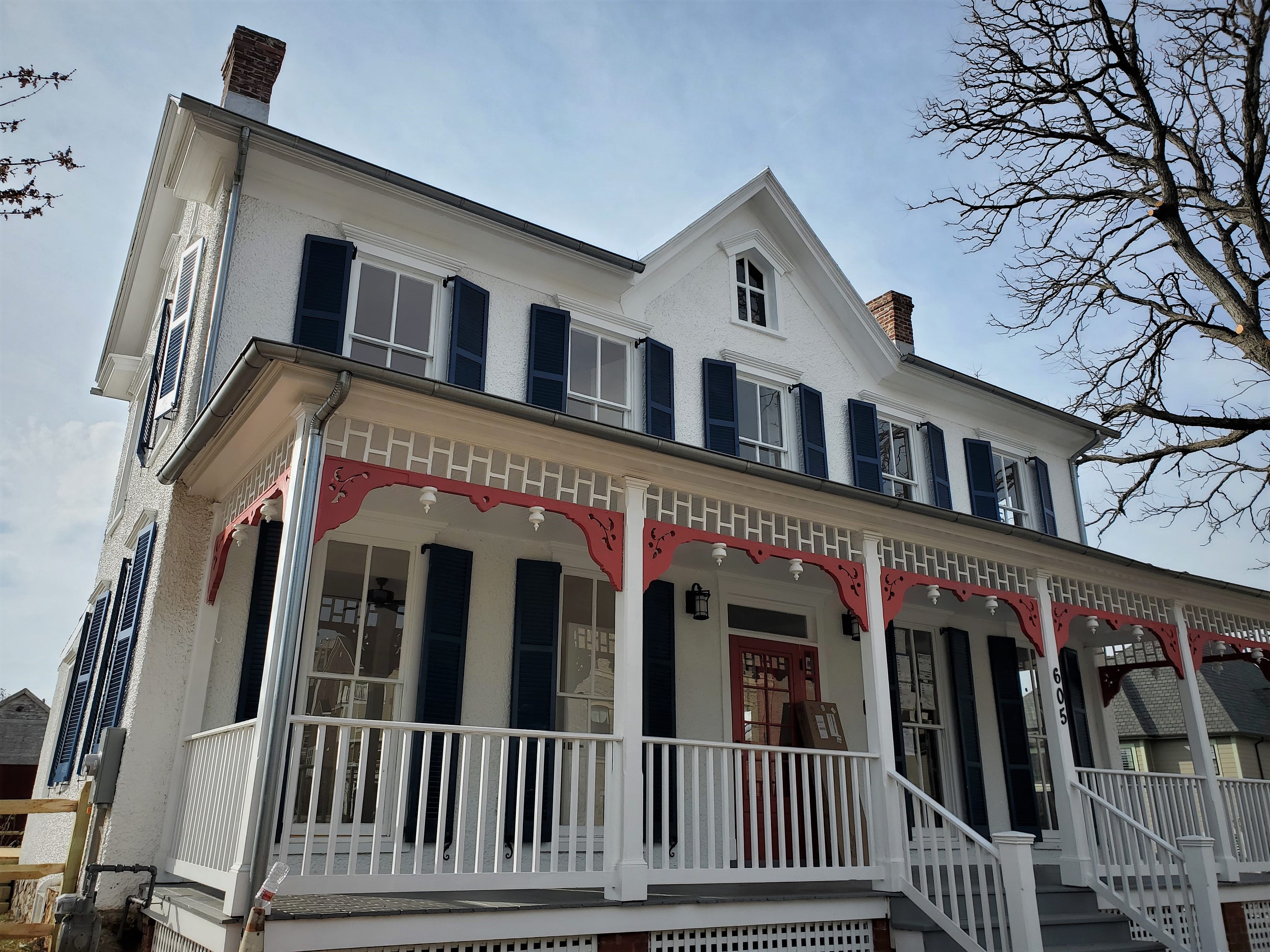The Deleted Scenes - What Housing Crisis?
Back in December, I did some driving around Gaithersburg in Montgomery County, Maryland with a friend of mine (this friend) who lives in the area. Gaithersburg is a really interesting outer suburb of Washington, D.C., and the area is home to a lot of experimentation in urban form—doing more, in various ways, with suburbia than just strip malls, highways, and detached houses. Because so much land is already built out under single-family zoning closer in to D.C., the less populated and still somewhat rural upper half of Montgomery County is seeing a boom in new construction. Our trip was to explore some of these new developments. (There’s really so much to be said about the fact that the density gradient is backwards in places like this—urban core, inner-ring suburbs with single-family zoning, and outer-ring suburbs with much denser housing.) The Gaithersburg area is home to Kentlands, one of the first New Urbanist communities, built to resemble the residential streets of a classic town, rather than a standard subdivision. It’s home to the RIO Lakefront development, a sort of proto-New Urbanist outdoor shopping and lifestyle center. And it’s home to Crown, a town-center style development with a square, some commercial streets, and apartments, townhouses, and detached houses, all on a rough street grid. I’ll be doing separate posts on Kentlands and RIO. This post was inspired by Crown. Now there is still a lot of pretty standard suburban development going on, but these “town centers” are increasingly popular. Some have that unmistakable movie-set feel, while others are quite lovely and pleasant. The mixing of uses and housing types, and the proximity to some integrated retail and dining, is a selling point in these developments. Anyway, however, this has nothing to do with my headline. As we walked down block after block of townhomes—and drove past a few other similar, large developments—I had a thought. What “housing crisis”? It looks like we’re building as far as the eye can see, and at some point we’ve just built enough, right? Here’s what we saw: What does this look like to you? I can see celebrating all this new housing in a lot of different forms, and at different price points. I do celebrate that. But I can also see questioning its far-flung location—I question that as well. And when you’re in the middle of it, it can feel like we’re building so much. What about giving the construction a break? What about keeping some countryside intact? Well, that’s the thing—it looks like we’re building as far as the eye can see. But we’re really not. Even townhomes are really not that dense; this town center at most is probably home to a few thousand people, which is a drop in the bucket for a county that borders one of the most important cities in the country, and which overall has a population of about 1 million people. All of the land that these modern developments take up is a fraction of the land taken up by midcentury single-family suburbs much closer to the city. There are a couple of things going on here. One is that building low- or mid-rise housing out at the edge like this intensifies the feeling that there’s so much development, because the transformation is so rapid. What was here before was farm fields, in most cases. Take a look at this old farmhouse, now under renovation to become a community center. There was something almost surreal about sprinting across somebody’s yard, between two brand new houses, into this little piece of untouched land from the property’s previous life. These kinds of greenfield developments can punch above their weight in a bad way, by making it feel like everything is being paved over when the actual number of people living there is quite small, in comparison with the region overall. Relatedly—and this can happen in cities, with high-rises or five-over-ones, as well—when a small geographic area is designated for major new construction, it also gives the impression that everything is constantly changing and construction goes on forever. This is the irony, which I’ve only realized recently, and which makes sense but is not at all obvious: if everything was constantly changing, it wouldn’t feel like much was changing at all. Now if you hate new housing, you might hear that as me arguing for slowly boiling the frog. But that’s not the sort of point I’m making. Change and adaptation is the natural state of the built environment. Not wholesale, but gradual, low-intensity, and more or less constant. Everything from knocking down walls to double an apartment or store space, to putting an addition on a house, to building an accessory unit, to an aging house being replaced with a small multi-unit building. This kind of change is like a background hum inherent to built places, and it’s basically unobjectionable and barely noticeable. But when the vast majority of land that’s already built out and served by infrastructure is frozen in regulatory amber by zoning and/or NIMBYism, all of that natural and barely noticeable change that should be happening across all that land area is instead forced into geographically very small areas. And then, when the large-scale, disruptive activity in those very small areas doesn’t really solve the problem of high housing costs, it might feel natural to say “see, we’re building so much, and it doesn’t make any difference, so why build anything?” That’s what happens when you try to make up for decades of housing construction shortfalls. The best solution would have been to never allow so much prime urbanized land to be locked up forever under zoning codes from more than half a century ago. Think of this as a sort of “law of the conservation of urban change”—you can’t stop growth, so when you try to, you end up pushing it into places where it makes less sense, costs more to build and maintain, and produces suboptimal built environments and transportation realities for people. You know those stretchy toy balls that you squeeze and part of it balloons and stretches way out? That’s what zoning inner-ring suburbs as single-family forever does to housing in a place like the D.C. area. That is the real housing crisis, not too many townhomes. But since that thought occurred to me, and since there are real issues with building heavily out on the suburban fringe, I wanted to acknowledge that here. Look for more illustrated posts from this Gaithersburg trip as well! Related Reading: Please consider upgrading to a paid subscription to help support this newsletter. You’ll get a weekend subscribers-only post, plus full access to the archive of nearly 300 posts and growing. And you’ll help ensure more material like this! You’re a free subscriber to The Deleted Scenes. For the full experience, become a paid subscriber. |
Older messages
Stores You Love to Walk Past
Saturday, March 5, 2022
Can a Main Street survive on window shopping?
New and Old #47
Friday, March 4, 2022
Friday roundup and commentary
Shopping Center Missing Links
Thursday, March 3, 2022
The ubiquitous retail format was not created, but evolved
A D.C. Building Mystery
Wednesday, March 2, 2022
What Do You Think You're Looking At? #47
Have You Seen the Price of Gas?
Tuesday, March 1, 2022
Thoughts on an expense that is not inevitable
You Might Also Like
*This* Is How To Wear Skinny Jeans Like A Fashion Girl In 2025
Wednesday, March 12, 2025
The revival is here. The Zoe Report Daily The Zoe Report 3.11.2025 This Is How To Wear Skinny Jeans Like A Fashion Girl In 2025 (Style) This Is How To Wear Skinny Jeans Like A Fashion Girl In 2025 The
The Best Thing: March 11, 2025
Tuesday, March 11, 2025
The Best Thing is our weekly discussion thread where we share the one thing that we read, listened to, watched, did, or otherwise enjoyed recent… ͏ ͏ ͏ ͏ ͏ ͏ ͏ ͏ ͏ ͏ ͏ ͏ ͏ ͏ ͏ ͏ ͏ ͏ ͏ ͏ ͏ ͏ ͏ ͏ ͏ ͏ ͏ ͏
The Most Groundbreaking Beauty Products Of 2025 Are...
Tuesday, March 11, 2025
Brands are prioritizing innovation more than ever. The Zoe Report Beauty The Zoe Report 3.11.2025 (Beauty) The 2025 TZR Beauty Groundbreakers Awards (Your New Holy Grail Or Two) The 2025 TZR Beauty
Change Up #Legday With One of These Squat Variations
Tuesday, March 11, 2025
View in Browser Men's Health SHOP MVP EXCLUSIVES SUBSCRIBE Change Up #Legday With One of These Squat Variations Change Up #Legday With One of These Squat Variations The lower body staple is one of
Kylie Jenner Wore The Spiciest Plunging Crop Top While Kissing Timothée Chalamet
Tuesday, March 11, 2025
Plus, Amanda Seyfried opens up about her busy year, your daily horoscope, and more. Mar. 11, 2025 Bustle Daily Amanda Seyfried at the Tory Burch Fall RTW 2025 fashion show as part of New York Fashion
Paris Fashion Week Is Getting Interesting Again
Tuesday, March 11, 2025
Today in style, self, culture, and power. The Cut March 11, 2025 PARIS FASHION WEEK Fashion Is Getting Interesting Again Designs at Paris Fashion Week once again reflect the times with new aesthetics,
Your dinner table deserves to be lazier
Tuesday, March 11, 2025
NY delis are serving 'Bird Flu Bailout' sandwiches.
Sophie Thatcher Lets In The Light
Tuesday, March 11, 2025
Plus: Chet Hanks reaches new heights on Netflix's 'Running Point.' • Mar. 11, 2025 Up Next Your complete guide to industry-shaping entertainment news, exclusive interviews with A-list
Mastering Circumstance
Tuesday, March 11, 2025
“If a man does not master his circumstances then he is bound to be mastered by them.” ͏ ͏ ͏ ͏ ͏ ͏ ͏ ͏ ͏ ͏ ͏ ͏ ͏ ͏ ͏ ͏ ͏ ͏ ͏ ͏ ͏ ͏ ͏ ͏ ͏ ͏ ͏ ͏ ͏ ͏ ͏ ͏ ͏ ͏ ͏ ͏ ͏ ͏ ͏ ͏ ͏ ͏ ͏ ͏ ͏ ͏ ͏ ͏ ͏ ͏ ͏ ͏ ͏ ͏ ͏ ͏ ͏ ͏
Don't Fall for This Parking Fee Scam Text 🚨
Tuesday, March 11, 2025
How I Use the 'One in, One Out' Method for My Finances. You're not facing any fines. Not displaying correctly? View this newsletter online. TODAY'S FEATURED STORY Don't Fall for the
